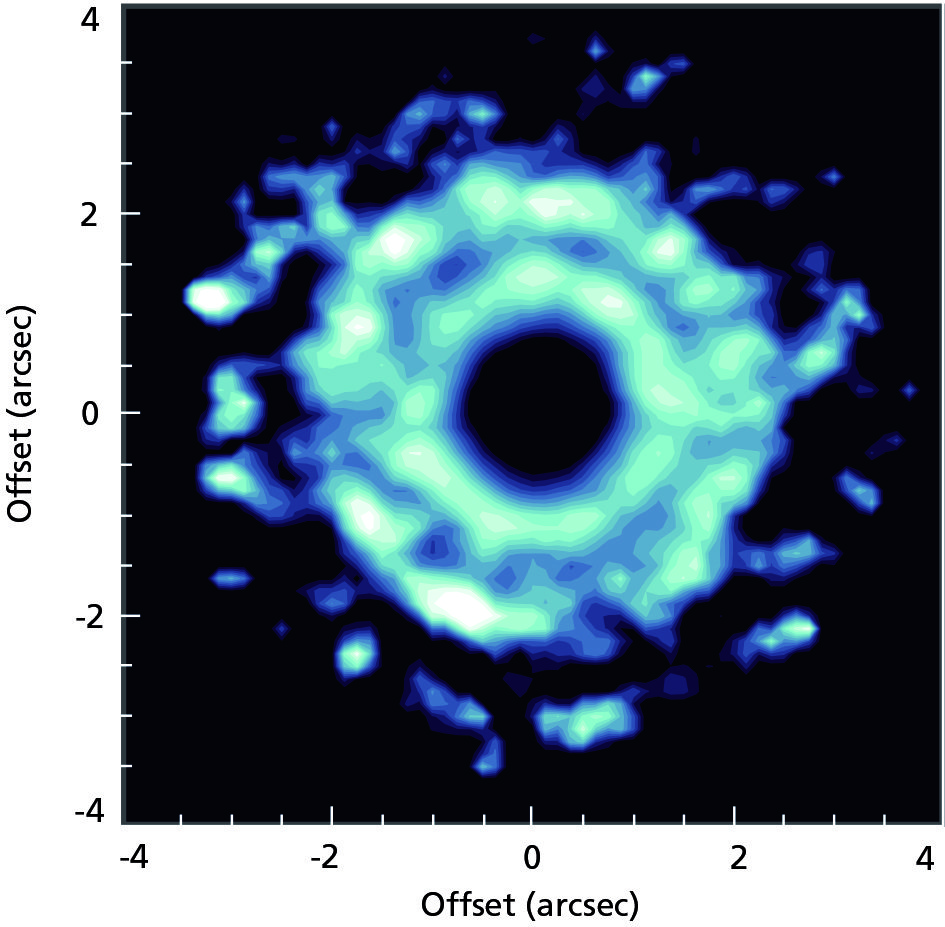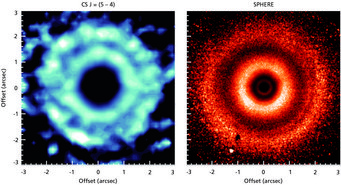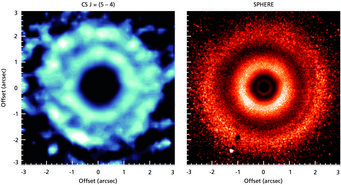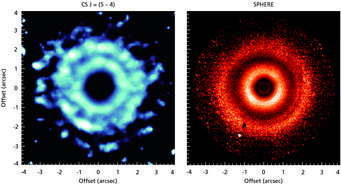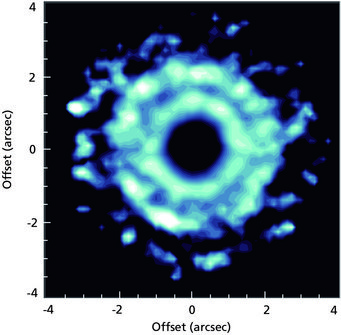Probing the three-dimensional structure of a protoplanetary disk
Astronomers have detected three-dimensional structures in the protoplanetary disk around the young star TW Hydrae. Their pioneering reconstruction uses both the light reflected by dust and light emitted by certain gas molecules to reconstruct the disk’s physical structure – a step forward from previous images of such disks that could not distinguish density variations from chemical or thermodynamic patterns. The pattern, a ring-shaped gap, could either indicate the presence of a planet or instabilities that could form a planet.
| Background information | Download area | In-depth description of the results |
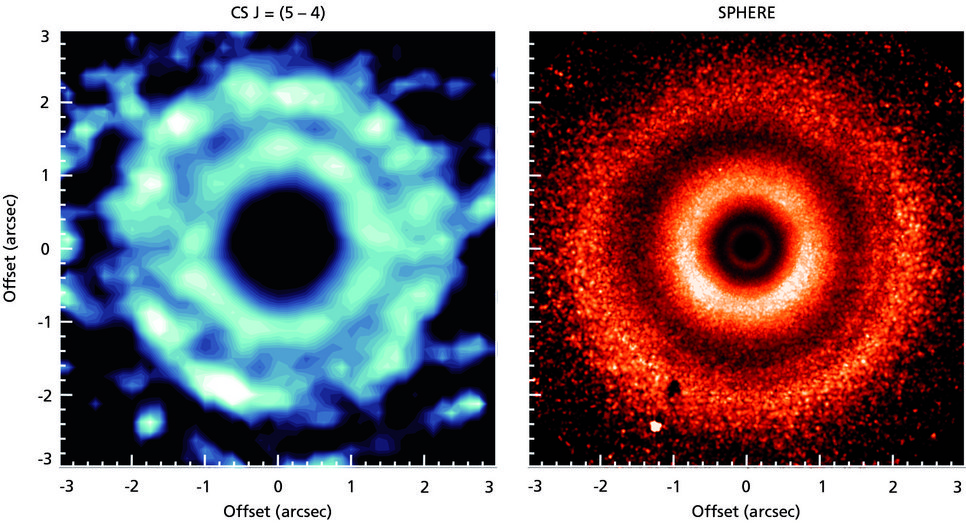
Planets form in swirling disks of gas and dust – and the spatial structure of such a disk holds valuable clues to the mechanisms of planet formation. It is only over the last few years that astronomers have gained the ability to take images that are detailed enough to show not only the disks, but some of their structure.
Now, astronomers led by Richard Teague, a graduate student at the Max Planck Institute for Astronomy, have taken the next step. Previous images of disk structures, impressive as they were, could not reliably distinguish whether certain disk regions looked different because of different matter properties (e.g. larger or smaller dust grains) or whether the different appearance was due to a density variation.
Density variations are particularly interesting because they could indicate the presence of a young planet, or of an area where a new planet is likely to form. Teague and his colleagues combined different kinds of light, namely light scattered by dust particles and light emitted by carbon monosulfide molecules, to demonstrate the presence of a ring-shaped gap where the density is less than half of the adjacent disk regions.
The gap is far out: about 95 times as far away from the central star as the Earth is from the Sun. Both the presence of a planet and the occurrence of planet-forming processes this far out pose a challenge to current models of planet formation, which do not account for planets forming that far out in this kind of disk.
The work by Teague and his colleagues and a similar work, published in December 2016 by Andrea Isella and team at Rice University in Texas, open a new era of study of planetary birthplaces, in which astronomers begin to probe the three-dimensional physical structure of these disks.
Background information
The results described here have been published as R. Teague et al.: "A Surface Density Perturbation in the TW Hydrae Disk at 95 au Traced by Molecular Emission" in Astrophysical Journal 835 (2017), 228.
The research was carried out by Richard Teague, Dmitry Semenov, Thomas Henning, Tillman Birnstiel, Roy van Boekel (all MPIA) in collaboration with Uma Gorti (NASA Ames and SETI-Institut), Stéphane Guilloteau, Anne Dutrey (both University of Bordeaux and CNRS), and Edwige Chapillon (University of Bordeaux, CNRS, and IRAM).
Additional figures and download
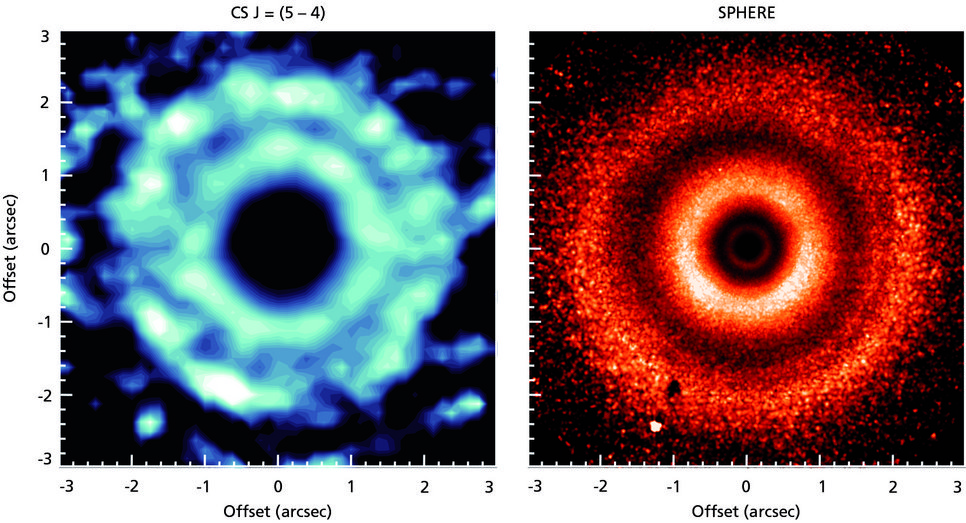
Figure 1
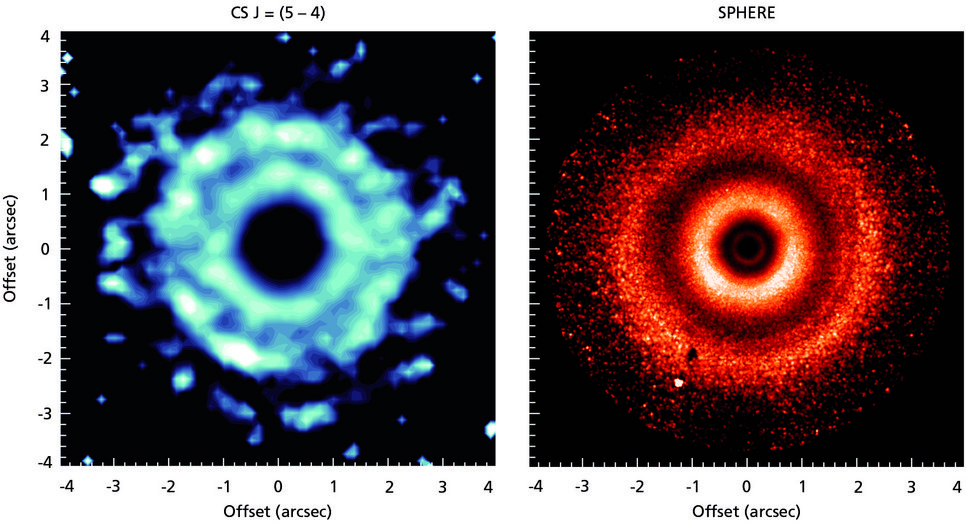
Figure 2
